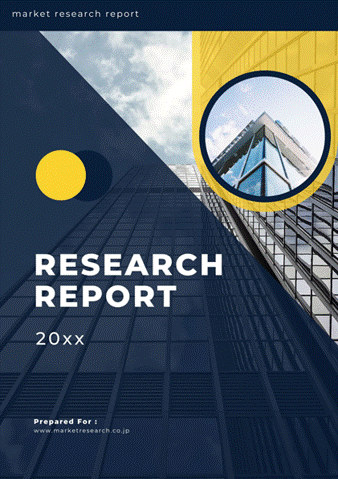 | • レポートコード:MRC2304C132 • 出版社/出版日:Mordor Intelligence / 2023年1月23日 • レポート形態:英文、PDF、90ページ • 納品方法:Eメール(受注後2-3営業日) • 産業分類:農業 |
| Single User | ¥684,000 (USD4,750) | ▷ お問い合わせ |
| Corporate License | ¥1,260,000 (USD8,750) | ▷ お問い合わせ |
• お支払方法:銀行振込(納品後、ご請求書送付)
レポート概要
| Mordor Intelligence社の市場調査では、世界のフェザーミール市場規模が予測期間中に年平均成長率 8.8%を記録すると予想しています。本書では、フェザーミールの世界市場を広く調査・分析をし、イントロダクション、調査手法、エグゼクティブサマリー、市場動向、種類別(従来型、オーガニック型)分析、用途別(動物用飼料、農業化学品、その他)分析、地域別(アメリカ、カナダ、メキシコ、ドイツ、イギリス、フランス、ロシア、スペイン、中国、インド、日本、インドネシア、ブラジル、アルゼンチン、南アフリカ、エジプト)分析、競争状況、市場機会・将来動向などについて掲載しています。並びに、調査対象企業には、The Boyer Valley Company、Valley Proteins、North Country Organics、Wudi Musen Biological、Kleingarn Agrarprodukte、FASA Group、JG Pears、K-Pro U.Sなどの企業情報が含まれています。 ・イントロダクション ・調査手法 ・エグゼクティブサマリー ・市場動向 ・世界のフェザーミール市場規模:種類別 - 従来型フェザーミールの市場規模 - オーガニック型フェザーミールの市場規模 ・世界のフェザーミール市場規模:用途別 - 動物用飼料における市場規模 - 農業化学品における市場規模 - その他用途における市場規模 ・世界のフェザーミール市場規模:地域別 - 北米のフェザーミール市場規模 アメリカのフェザーミール市場規模 カナダのフェザーミール市場規模 メキシコのフェザーミール市場規模 … - ヨーロッパのフェザーミール市場規模 ドイツのフェザーミール市場規模 イギリスのフェザーミール市場規模 フランスのフェザーミール市場規模 … - アジア太平洋のフェザーミール市場規模 中国のフェザーミール市場規模 インドのフェザーミール市場規模 日本のフェザーミール市場規模 … - 南米/中東のフェザーミール市場規模 ブラジルのフェザーミール市場規模 アルゼンチンのフェザーミール市場規模 南アフリカのフェザーミール市場規模 … ・競争状況 ・市場機会・将来動向 |
The global feather meal market is likely to experience a CAGR of around 8.8%, especially due to the traction gained by the costs of feed ingredients in recent years. Especially, in developing regions such as in Asia, smallholder dairy or livestock grazing is the common practice, these farmers often fail to achieve their production limit because of their inability to supply adequate feed to their livestock. The high livestock feed cost is limiting them to supply adequate feed. Hence, the potential of using by-products such as feather meal in the compound feed can drastically reduce the feed costs and thereby making enough feedstocks available at a global level.
Feather Meal Market Trends
Feather Meal to Serve as a Economic Viable Alternative for Feed Ingredients
Feather waste from the poultry processing sector can potentially be used as a protein source in the compound feed industry. Improvements in current processing methods that hydrolyze proteins in feathers to make them more digestible for non-ruminant animals have led to the availability of high-quality hydrolyzed feather meal that could be considered as a viable economic alternative for livestock feed ingredients. The feeding value of feather meal can be affected not only by the protein content of it but also by the energy content present in it. Moreover, the feed conversion ratio results from the comparative analysis of the Corn-Soya basal ration, fish meal 5%, and feather meal 5%, clearly reveals that the inclusion of feather meal has resulted at 2.24, while the corn-soya basal ration and fish meal at 2.25 and 2.20 respectively. This, clearly demonstrates the nutritional profiling of feather meal. Furthermore, the increasing costs of feed raw materials and the proportional rise in the supply-demand gap for feed raw materials is likely to accelerate the growth of viable economic alternatives such as feather meal in the years to come.
Asia-Pacific to Drive the Feather Meal Market
Asia-Pacific is emerging as a hot spot in the food processing scenario. The huge production of agricultural produce along with the diverse animal resources has made the country one of top food-producing countries in the world. In this regard the poultry and meat processing industry are booming, especially the poultry production and processing, as the growth rate of it is very high. Asia holds the highest poultry population, accounting at 14.6 billion heads in 2018. To guarantee the safety of chicken meat for consumers, an organized processing industry is gradually emerging. Today the modern broiler processing plants have the potential to process 200,000 to 1,000,000 birds per day, therefore tonnage of waste material is also produced. Currently, Feather Meal is an underutilized protein source in the region. Moreover, rising awareness regarding the nutritional benefits of feather meal across the region will play a part in solving the world’s protein needs by producing more animal protein, thereby recreating a price structure.
Feather Meal Market Competitor Analysis
The global feather meal market is a very niche market, with various small and medium-sized companies coining a very minimal share in the world. This has resulted in very stiff competition. The development of regional markets and local players in different parts of the world is the major factor for the fragmented nature of the market. Asia-Pacific and North America are the two regions showing maximum competitor activities.
Additional Benefits:
- The market estimate (ME) sheet in Excel format
- 3 months of analyst support
1 INTRODUCTION
1.1 Study Deliverables
1.2 Study Assumptions
1.3 Scope of the Study
2 RESEARCH METHODOLOGY
3 EXECUTIVE SUMMARY
4 MARKET DYNAMICS
4.1 Market Overview
4.2 Market Drivers
4.3 Market Restraints
4.4 Porter’s Five Force Analysis
4.4.1 Threat of New Entrants
4.4.2 Bargaining Power of Buyers/Consumers
4.4.3 Bargaining Power of Suppliers
4.4.4 Threat of Substitute Products
4.4.5 Intensity of Competitive Rivalry
5 MARKET SEGMENTATION
5.1 Type
5.1.1 Conventional
5.1.2 Organic
5.2 Application
5.2.1 Animal Feed
5.2.2 Agrochemicals
5.2.3 Others
5.3 Geography
5.3.1 North America
5.3.1.1 United States
5.3.1.2 Canada
5.3.1.3 Mexico
5.3.1.4 Rest of North America
5.3.2 Europe
5.3.2.1 Germany
5.3.2.2 United Kingdom
5.3.2.3 France
5.3.2.4 Russia
5.3.2.5 Spain
5.3.2.6 Rest of Europe
5.3.3 Asia Pacific
5.3.3.1 China
5.3.3.2 India
5.3.3.3 Japan
5.3.3.4 Indonesia
5.3.3.5 Rest of Asia-Pacific
5.3.4 South America
5.3.4.1 Brazil
5.3.4.2 Argentina
5.3.4.3 Rest of South America
5.3.5 Middle East
5.3.5.1 South Africa
5.3.5.2 Egypt
5.3.5.3 Rest of Middle East
6 COMPETITIVE LANDSCAPE
6.1 Market Share Analysis
6.2 Most Adopted Strategies
6.3 Company Profiles
6.3.1 The Boyer Valley Company
6.3.2 Valley Proteins
6.3.3 North Country Organics
6.3.4 Wudi Musen Biological
6.3.5 Kleingarn Agrarprodukte
6.3.6 FASA Group
6.3.7 JG Pears
6.3.8 K-Pro U.S
7 MARKET OPPORTUNITIES AND FUTURE TRENDS

 調査レポート
調査レポート